Classification Of Pain And Arthritis As Per Ayurveda
Article by Dr Raghuram Y.S. MD (Ay)
Whenever a person goes to a doctor seeking remedy for his or her health issue, one thing is sure that they will be suffering from one or the other form of pain – related to body or mind or both.
Any disease, be it at psyche level or somatic level, will invariable be attached to pain of some degree. It is not mandatory that pain gets manifested in all diseases. Pain shows off in some diseases in a severe way, will have a mild to moderate course in other cases and will remain dormant in many disorders.
Pain also depends on the tolerance levels of the person. A small pain might look bigger in a weak person and in a strong person pain of a greater magnitude would look feeble.
Among many conditions which manifest with pain as the predominant symptom, arthritis is the main one.
Table of Contents
What is Arthritis?
Arthritis is one of the diseases which presents with pain.
The word is derived from the Greek words Arthro-meaning joint, It is-meaning inflammation. Arthritis is a form of joint related disorder. It involves inflammation in one or more joints of the body. There are more than 100 forms of arthritis. The most common and popular arthritis we know are – Osteoarthritis, Rheumatoid arthritis, Psoriatic arthritis, Gout, Septic arthritis etc.
Read related: Ayurvedic Home Remedy For Sciatica, Rheumatoid Arthritis With Haritaki
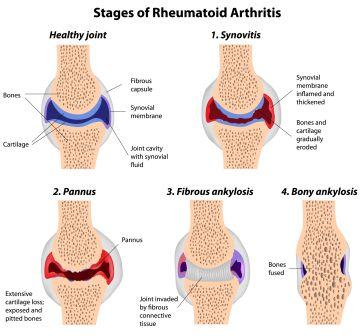
Causes
Common causes of joint pain and arthritis –
Inflammation of joints – like in Rheumatoid arthritis
Joint damage – due to accidents, traumas, occupation
Degeneration (wear and tear of joint on daily basis) – Ex. Osteoarthritis
Accumulation of crystals (uric acid or urate) in the joints – Ex. Gout
Muscle strains due to forceful movements
Fatigue
Low immunity and autoimmune process in the body wherein the body’s protective mechanism itself is harming the body by becoming destructive mechanism – Ex. Rheumatoid arthritis
Infection – Ex. Septic arthritis etc
Collagen vascular disorders – Ex. Lupus Erythematosus
Symptoms
Symptoms of Arthritis –
Joint pain (it may be due to inflammation, joint damage, wear and tear in the joint or joints on a daily basis, muscle strains caused due to forceful movements and fatigue). Intensity and severity of pain varies among different types of arthritis.
Joint Swelling
Joint stiffness (catch)
Aching around the joints
Arthritis disorders like Lupus and Rheumatoid Arthritis can affect other organs in the body. This gives raise to many symptoms like –
Inability to hold or walk
Stiffness – worsening at morning or after use
Malaise and fatigue
Weight loss
Sleeplessness
Muscle pain and weakness
Joint tenderness
Difficulty in moving the joint and loss of flexibility of joints
All these symptoms would not only make us helpless, disable and crippled but also will impact on our socio-economic status. Arthritis limits day-to-day activities leading to sickness absenteeism and frequent hospital visits and hospitalizations.
Chronic arthritis becomes cause for physical inactivity leading to obesity, high levels of bad fat and susceptibility for heart diseases, multiple organ damage.
Arthritis will not only affect the body but also will affect the mind. People with arthritis are at increased risk of developing anxiety disorders and depression.
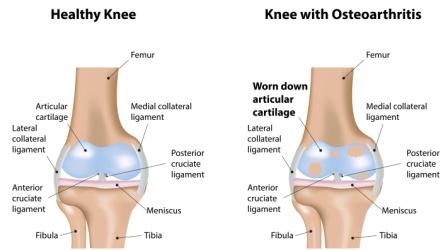
Arthritis or musculoskeletal disorders prevalence has increased by 45% from 1990 to 2010. Osteoarthritis is the fastest increasing major health condition. (Musculoskeletal disorders MSD’s are injuries or pain in the body’s joints, ligaments, muscles, nerves, tendons and structures that support limbs, neck and back)
Ayurvedic classification
Ayurveda Classification of Arthritis –
Ayurveda has actually not classified or given a scale to access the nature and magnitude of pain and arthritis. But with all the available references from the core of Ayurvedic texts, let us see if we can classify and understand arthritis and pain in an Ayurvedic way.
Before doing this, let me give a brief introduction of how the diseases are broadly classified according to Ayurvedic medicine.
Classification of Roga or diseases according to Ayurveda –
According to Ayurveda, the diseases are broadly classified into 3 types:
Nija Roga / Doshaja Roga or Sharirika Roga –
These are the diseases caused at the physical level. They can be called as primary physical disorders or diseases. According to Ayurveda when morbid Doshas (Vata, Pitta or Kapha in isolation or combination) get lodged in the weak and susceptible Dhatus (body tissues) and damage them, diseases are manifested. Thus Nija Roga’s are caused by aggravated Vata, Pitta and or Kapha and are manifested at physical level.
Agantu (Agantuja) Roga –
These are a group of disorders or diseases which get manifested due to accidents and traumas. These diseases are not caused by morbid Dosha’s but the dosha’s invariably get’s involved after the injury or trauma and exhibit their symptoms.
All the diseases caused due to infections (infectious disorders), effect of toxins and chemicals, pollution, foreign body or bodies, etc fall under this group of diseases. Idiopathic diseases are those diseases for which exact causes cannot be tracked. These diseases are also included under Agantu diseases.
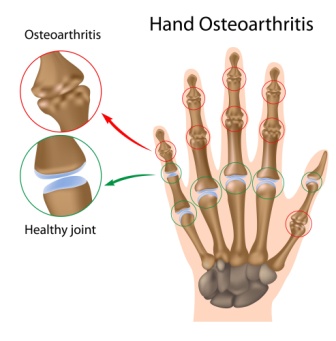
Manasa or Manasika Roga –
These are the diseases having their origin from disturbed mind. Mental (psychiatric) disorders can be included in this category. Manas is governed by 3 principles, Satva, Rajas and Tamas. Where satva reflects integrity and composure of brain (doesn’t contribute to morbidity); Rajas and Tamas are considered as Manasika Doshas (morbid factors of the mind). These factors when imbalanced disturbs the mind and produce mind related diseases.
Relationship between Nija and Manasika Rogas:
Body and mind are 2 sides of the same coin. Obviously the diseases related to one will have an impact on the other. Ayurveda was the first science to have explained this concept of psychosomatic disorders. Nija or shareerika roga’s will affect the mind in due course of time,
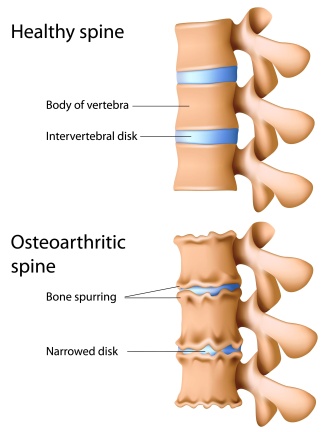
Ex. a patient of arthritis getting worried and depressed as time goes on. Similarly the Manasika roga’s too will get associated with physical complaints in due course of time, Ex. a patient of depression developing body pains which are actually not physical manifestations of musculo skeletal disorders. In these treating the mind will relieve the physical complaints. Similarly, the symptoms at body and mind level will also manifest in Agantu roga’s.
Classification of Arthritis, Joint Disorders according to Ayurveda:
Taking the above concept of generalized classification of diseases in Ayurveda, let us try to classify the joint disorders also on similar lines. The Sandhi Roga’s, i.e. Joint Disorders or Musculoskeletal disorders can be classified as:
Nija Sandhi Roga – Joint Disorders occurring at the physical plane or Joint Diseases Proper –
Sandhi Roga or Joint Disorders due to Dosha Vitiation:
Most of the joint disorders which cause symptoms like pain, swelling, deformity etc fall under this category because the symptoms are felt and seen at physical level.
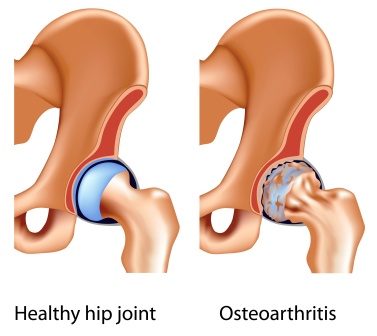
The structures forming the joint like bone and cartilage, the soft tissues around the joint like muscles, tendons etc show varying degrees of damage will cause pain and other related symptoms. According to Ayurveda, these diseases are caused due to the affliction of joints (musculoskeletal system) by the morbid Dosha’s.
Samprapti
How does this happen?
When the dosha’s get disturbed and vitiated out of limits due to the effect of erratic food, lifestyle, stress, environmental and geographical impact etc they tend to overflow from their places and get settled in weak and susceptible places.
In people whose joints (components making the joints) are weak and susceptible, the dosha’s get lodged in those joints and create a disease process there. Gradually they destroy and damage the tissues making up the joint.
When they are not attended in the initial process of pathogenesis, they tend to cause severe damage, cause loss of movements and make the person crippled. The dosha’s also will give rise to many complications and multiple organ damage in due course of time.
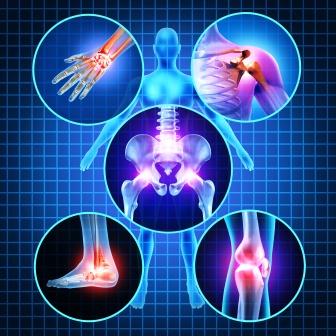
This happens due to the lowering immunity caused by the lodgement of uncontrolled dosha’s in different tissues. Gradually the afflicted person gets mentally disturbed, irritated and depressed. Thus the Nija Sandhi Roga has kept its step into the mental plane also, thus making the disease a psycho-somatic one.
Role of Tridosha
Role of Tridosha’s in anatomy and physiology of joints –
Before going to the classification of joints in an Ayurvedic way, let me brief you about the role of Vata, Pitta and Kapha i.e. Tridosha’s in the joints and musculoskeletal system.
Vata is an energy element which maintains all the movements, sensations and emotions in the body and mind. It is the control mechanism or remote control of all our life activities. Vata helps in easy movements of joints, when it is balanced and rendering its functions easily.
Pitta maintains the blood flow to the joints keeps up the warmth and helps in fighting the infections coming on towards the joints and soft tissues. This function of Pitta is possible when it is well balanced and not contaminated. It is involved in all metabolic processes taking place in the joints.
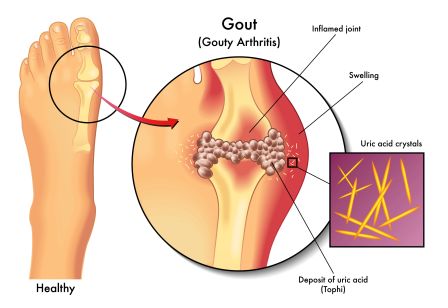
Kapha is an integrating substance. It binds cell to cell and maintains the integrity, composure and stability of the body components and the body as a whole. In the joints, it helps in lubrication of joints, provides strength and hydration to the soft tissues, maintains integrity of the joints and aids in smooth movements.
Pathological joint disorders
Pathological joint disorders caused by Dosha imbalance or Dosha morbidity –
Vata afflicted Joints – When morbid Vata afflicts the joints and soft tissues of musculoskeletal system, it causes degenerative diseases of the musculoskeletal system. It causes diseases like Sandhigata Vata (Osteoarthritis), Vatarakta (Gouty arthritis), Mamsagata Vata (Fibromyalgia, Myositis, Myasthenia gravis), Asthigata Vata (osteopenia, osteoporosis) etc diseases
Read related: OsteoArthritis: Symptoms, Prevention, Lifestyle tips, Ayurvedic treatment
Pitta afflicted Joints – When morbid Pitta afflicts the joints and soft tissues of musculo skeletal system, it causes inflammatory diseases of the musculo skeletal system. It causes diseases like Amavata (Rheumatoid arthritis), Vatarakta (pitta form of Gouty arthritis) etc diseases. The swelling in these disorders is basically of inflammatory origin.
Read related: Gout: Causes, Symptoms, Treatment, home remedies
Kapha afflicted Joints – When morbid Kapha afflicts the joints and soft tissues of the musculoskeletal system, it causes oedematous diseases of the musculoskeletal system. All those joint disorders which present with oedematous (non-inflammatory swelling) belong to Kapha joint disorders. Ex. When Kapha is involved in Vatarakta or Amavata, Kapha symptoms like joint swelling (devoid of redness in comparison to pitta type of swelling where we can find warmth and redness), stiffness, cold on touch etc.
Note – Pitta and or Kapha can get associated with Vata in conditions like Sandhigata Vata, Mamsagata Vata etc conditions and contribute to the pathology at some point of pathogenesis. In such cases, Pitta and Kapha symptoms can be seen alongside Vata symptoms.
Other forms of Dosha joint disorders –
It is not a rule that only Vata or Pitta or Kapha would produce a joint or musculo skeletal disorder. They can mutually combine and produce a different and difficult kind of morbidity all together.
Ayurvedic doctors can classify these disorders by working out the permutations and combinations of the Dosha’s involved and also seeing the proportion of morbidity of one Dosha in comparison to the other. Doing so, we derive some more subtypes of Joint disorders like –
Vata-pitta Joint disorders – In this, both morbid Vata and Pitta will cause the joint pathology and produce symptoms accordingly. As the name suggests, maximum damage would have been caused by morbid Vata and Pitta morbidity will be comparably lesser than Vata.
The degeneration caused by Vata will be more than the inflammation caused by Pitta. Thus Vata-pitta morbidity in the joints would be more degeneration associated with less amount of inflammation. Pain (Vata) is more than burning sensation (pitta).
The other way is also true i.e. Pitta-Vata joint disorder. Here the condition is reversed. It is more inflammation and less degeneration in that order because Pitta is more vitiated in comparison to Vata. Burning sensation (Pitta) will be more in comparison to pain (Vata).
Pitta-Kapha Joint Disorders – In this, both morbid Pitta and Kapha will cause the joint pathology and produce symptoms accordingly. As the name suggests, maximum damage would have been caused by morbid Pitta and Kapha morbidity will be comparably lesser than Pitta.
The inflammation caused by Pitta will be more than the swelling or oedema caused by Kapha. Thus Pitta-kapha morbidity in the joints would be more inflammation associated with less amount of oedematous swelling and fluid retention in the joints and soft tissues. Burning sensation (pitta) is more than Stiffness (Kapha).
The other way is also true i.e. Kapha-Pitta joint disorder. Here the condition is reversed. It is more stiffness of joints and soft tissues and less inflammation in that order because Kapha is more vitiated in comparison to Pitta. Stiffness (Kapha) will be more in comparison to Burning sensation (Pitta).
Kapha-Vata Joint disorders – In this, both morbid Kapha and Vata will cause the joint pathology and produce symptoms accordingly. As the name suggests, maximum damage would have been caused by morbid Kapha and Vata morbidity will be comparably lesser than Kapha.
The swelling and oedema caused by morbid Kapha will be more than degeneration caused by Vata. Thus Kapha-Vata morbidity in the joints would be more swelling associated with comparably less amount of degeneration. Oedema (Kapha) is more than Pain (Vata).
The other way is also true i.e. Vata-Kapha joint disorder. Here the condition is reversed. It is more pain and less oedematous swelling in that order because Vata is more vitiated in comparison to Kapha. Pain in the joints (Vata) will be more in comparison to stiffness of the joint (Kapha).
Tridoshik Joint Disorder – In this type of joint disorder the joint pathology and damage will be caused by all 3 Dosha’s Vata, pitta and kapha, vitiated in equal proportions. The signs and symptoms of the joint disorder will depend on the quality and quantity of vitiation of a particular Dosha in comparison to the proportions of vitiation of other Doshas.
Depending on the permutations and combinations of vitiation of individual doshas, this type also classifies into many sub-types. These cases are generally not diagnosed at this micro-level in the Ayurvedic clinical practice.
(I have not dealt with these minor sub-classifications with a fear of over-expansion of the topic. I just had an idea of presenting the idea of classification of joint disorders in an Ayurvedic way, in a way which is easy to understand).
Sandhi Roga or Joint Disorders due to Dhatu Kshaya or damage to joint and surrounding tissues:
The Vitiated Dosha’s alone don’t cause diseases pertaining to the joints and musculoskeletal system. They need a favourable condition wherein they can create disease pathology. That condition is provided by weak and susceptible tissues surrounding the joints i.e. bones, muscles, tendons, ligaments, etc.
How does this happen?
The vitiated Dosha’s are constantly in circulation. As and when they find weak and susceptible dhatu’s or tissues, they get lodged in those tissues. The interaction of morbid dosha’s with the weak tissues will lead to damage in the bones, joints and soft tissues around the anatomical bony joints. This will lead to different types of arthritis. The symptoms will be in accordance to the dosha involved and magnitude of tissue damage.
If morbid Vata gets lodged in the joints, it causes degeneration of bones and soft tissues around the joints.
If morbid Pitta gets lodged in the joints, it causes inflammation of bones and soft tissues around the joints.
If morbid Kapha gets lodged in the joints, it causes oedematous swelling and fluid retention in the joints and soft tissues around the joints.
Joint disorders due to Ama
Sandhi Roga or Joint Disorders due to Ama:
Ama is a metabolic toxin which has been created due to errors in metabolism, both at the gut as well as cellular levels. Ama has a capacity to create blocks in the body due to its property of sticking to the surface of the cells and channels of the body (transport systems).
Sluggish digestion or weak metabolic fire (gut fire, the active components taking part in the digestion of food at the gut level including the stomach acids) leads to indigestion.
This leads to the formation of erratic or unprocessed food essence (ahara rasa) which is about to get into the circulation for being distributed to nourish the body tissues.
From this, the first tissue rasa dhatu is improperly formed and is unprocessed. This unprocessed and contaminated ahara rasa formed in the amashaya (stomach or upper gut) is called ama.
Characteristics of Ama
अविपक्वं असम्युक्तं दुर्गन्धं बहु पिच्छिलं।
सदनं सर्व गात्राणां आम इति अभिधीयते॥(मा.नि.आमवातनिदानम् मधु)
Avipakwam asamyuktam durgandham bahu pichchilam
Sadanam sarva gaatraanaam aama iti abhidheeyate (Ref – Madhava Nidanam, Amavata nidanam, Madhukosha teeka)
Avipakwam – unprocessed
Asamyuktam – disintegrated
Durgandham – foul smelling
Bahu pichchilam – very sticky
Sadanam sarvagatrani – causes weakness of all the body parts
Due to the above said characteristic features, ama tends to stick within the cells and the channels of transportation in the body leading to multiple blocks. Due to these blocks the tissues are not nourished in a good way resulting in weakness and fatigue due to deficit nutrition. Ama further predisposes to sluggish gut and tissue metabolism.
Sluggish metabolism leading to indigestion and formation of ama and ama once again predisposing to weak digestion and formation of more ama becomes a vicious cycle as time progresses.
If this condition is not attended ama acts as a toxin and starts producing pain, swelling and stiffness at the site of its adherence and localisation. Thus ama when vitiated causes many painful conditions at the place of its vitiation and lodgement.
Joint disorders caused due to circulating ama can be classified into –
Disorders caused due to association of ama with dosha but not afflicting the tissues (Sama Dosha janya sandhi vikara): This is once again of 3 types –
Sama Vata – Ama associated with Vata
Sama Pitta – Ama associated with Pitta
Sama Kapha – Ama associated with Kapha
These are generally temporary painful conditions. They will be relieved by administration of ama expelling (pachana) medicines and or fire kindling medicines (deepana). If diagnosed earlier, they are easy to treat because the sama doshas are not localised in the tissues and have not caused tissue damage. If neglected the sama doshas can get lodged in the tissues and cause serious disorders in the long run.
Disorders caused due to association of ama with dosha and also afflicting the tissues (Sama Dosha-dushya sammurchana janya sandhi vikara): In this, the ama in association with morbid Vata (other dosha’s also) get lodged in the weak tissues and cause diseases like Amavata etc.
Disorders caused due to association of ama with tissues (Sama Dhatu janya sandhi vikara):
These too are minor and temporary manifestations of joint pathology. Since Doshas are not involved in the pathogenesis in these conditions and there is association of ama in the tissues, they cannot be considered as disease proper.
The circulating ama gets lodged in the tissues, causes blocks within the tissues owing to their sticky nature, disturbs the metabolism, stagnate the toxins within the tissues and damage the cells. This will lead to painful conditions mimicking arthritis.
When diagnosed early and in proper time, they are easier to tackle. Digesting and expelling ama from the cells (ama pachana) and strengthening the weak tissues form the key points of treatment.
Joint disorders due to mala sanchaya (accumulation of wastes, metabolic toxins, excreta in the body) –
According to Ayurveda, there are 3 main metabolic wastes:
Pureesha – Stools
Mutra – Urine
Sweda – Sweat
These 3 metabolic wastes are called as Sthula malas (larger excreta) because they are produced in excess. They should be formed and eliminated in proper time and in proper quantity, regularly. If not they get converted into toxins and produce many systemic disorders including arthritis.
Sthula Mala’s are joined by small streams of sukshma malas (lesser excreta) i.e. the small quantity of toxins formed during tissue metabolism. This happens just like a sea is joined by many rivers. Thus the main excreta is not just the waste products of digestion and metabolism but are in fact joined by the tissue flush-out toxins.
Thus the tissues throw their wastes in the larger excreta. Proper and timely discharge of tissues (of their toxins) into the mainstream excreta is mandatory for us to be healthy. Otherwise the toxins are stagnated in the tissues and produce many joint and musculoskeletal disorders along with other systemic diseases.
If the Sthula mala’s are not excreted in proper time, there is a retrograde pressure on the tissues. This disables the tissues from throwing away their toxins.
Joint disorders due to Avarana
Avarana is a difficult and least understood aspect of Ayurvedic pathology. Avarana means being clouded or enveloped or occluded. Vayu is invariably involved in the Avarana.
Avarana is the disturbance in the normal functioning of a dosha, a sub dosha or dhatu (tissue) when they are enveloped or obstructed by another morbid dosha, sub dosha or dhatu. The obstruction to normal functioning can be due to excreta or food also.
Example – In a condition called Pittavrita Vata, Pitta envelopes Vayu and the normal functioning of Vata are disturbed. Here Pitta is called Avaraka, the envelope and Vata is called Avrita, the enveloped. The treatment approach will be to administer Pitta destroying remedies, removing the envelope of Pitta and releasing the obstructed Vata. Later Vata alleviating medicines should be given and its functioning should be brought back to normal.
This is a simple example. These Avaranas occur in many forms. The types depend on the Dosha, sub-dosha and dhatus’s involved. The site of manifestation of disorder, the symptoms and the line of treatment of each condition of Avarana will vary from condition to condition and also on the type of Avarana and the elements involved in Avarana.
Pranavrita Apana is an example of a Vata subtype Prana Vayu obstructing (enveloping) the normal functioning of another subtype i.e. Apana Vayu.
Avarana’s too cause many type of joint and musculoskeletal disorders and different forms of painful conditions of the joints which resemble arthritis. These are the most difficult forms to treat because they are not actual diseases but are conditions which occur due to functional interferences within the system
Joint disorders due to Sroto dushti
Joint disorders due to Srotho Avarodha and Srotho dushti –
Srotas means channels or ducts or transport systems in the body. They carry nutrition and materials of building and tissue formation from the place of manufacture to place of need. There are innumerable srotas’s in the body which are functioning and transporting essential things regularly from one place to the other.
The proper functioning of these srotas’s is very important for the maintenance of health and metabolism, for physical and mental well being.
Srotho Avarodha means blocks or obstructions occurring in these transport systems of the body. They can occur due to intrinsic factors like morbid dosha’s, mala or ama, weak agni (metabolic fire), pressure from tumours etc. they can also occur due to extrinsic factors like injury, foreign bodies etc.
When a particular srotas gets occluded, it causes the diseases pertaining to that particular tissue. Example, when the srotas related to mamsa dhatu (muscle tissue), asthi dhatu (bone tissue) gets occluded; these tissues are either not properly formed or will not get proper nutrition.
This leads to lowered immunity in the tissues. This renders the tissues weak. The weak tissues get susceptible to be attacked by morbid dosha’s. When the weak tissues are damaged by vitiated dosha’s many types of joint disorders including arthritis will be manifested.
Sroto dushti or deformity of Srotas can occur in 4 types –
Ati pravritti – Excessive discharges in the channels
Sanga – Obstruction in the channels
Vimargagamana – Retrograde or reverse movements within the channels
Sira granthi – Formation of excessive tissue or cysts or tumors in and around the srotas
Any of the above said type of sroto dushti when occurring in channels of transportation related to asthi, meda and mamsa dhatus can cause arthritis.
Joint disorders caused due to low immunity
Joint disorders caused due to low immunity (Vyadhipratirodha shakti kshayajanya or Balakshaya janya sandhi roga):
Kapha, according to Ayurveda is called Bala (strength, immunity) when it is normally placed in the body and is called as Vikriti (morbidity) when it gets disturbed.
Ojus is the essence of all the tissues in the body. Ojus is often compared to the immune system in the body which reflects qualitative and quantitative balance of the tissues. This again is in 2 forms – para ojus and apara ojus. One part stays in the heart and the other part is in circulation (circulating immunoglobulins).
Depletion or morbidity of Kapha and or ojus lessens the immunity. On the backdrop there would have been a considerable tissue depletion including bones and muscles. This predisposes for many rheumatological conditions, musculoskeletal disorders and autoimmune disorders of the joint like rheumatoid arthritis.
Read related: diet for rheumatoid arthritis: Ayurvedic recommended food
According to some references of Ayurveda, Rakta dhatu (blood tissue) and Mamsa dhatu (muscle tissue) also contribute to immunity (including the integrity and immunity of components making the joint).
The above said are the different types of Nija joint disorders. The symptoms related to mind like anxiety, depression, pain in subconscious level, feeling of insecurity, mood swings etc might get entangled in a later condition giving the disease a complete psychosomatic dimension.
Agantuja sandhi roga
Agantu Sandhi Roga – Joint diseases caused due to accidents and trauma and Secondary Joint disorders –
These are a set of joint disorders which occur as an effect of trauma and or accidents of various proportions and variable degrees. Structural damage of some sort due to trauma is essential for the joint disorder to be classified into this category.
The symptoms are of course manifested at the physical level. They are not called as Nija Roga’s because the Dosha’s are not involved from the beginning. In these cases, the doshas are seen to be involved in a later context and may complicate the course or recovery of the disease.
Gradually the mind is also involved in the later part of the disease. This gives the dimension of a psycho-somatic disorder.
Secondary Joint Diseases – Some joint diseases may be an effect of some other systemic disorder. They are called as secondary joint disorders or secondary musculoskeletal disorders. These diseases can be clubbed into the category of Agantuja Sandhi Rogas.
Similarly, the infectious joint disorders also can be included into Agantu Sandhi Rogas.
The treatment approach includes primary attention to the cause i.e. treating the trauma or the primary disease behind the causation of joint disorder or infections causing the joint diseases.
In case of a secondary manifestation like a tubercular joint which is caused on the drop of tuberculosis disease, we should go to the root and attend tuberculosis alongside treating the affected joint.
As secondary symptom
Sandhi / Asthi Ruja (Joint and Bone Pain) can be secondary to the below said conditions according to Ayurveda –
Asthikujana (sounds in the bones) – Symptom of Asthigata Jwara (fever afflicting the bones)
Asthi-bheda (splitting pain in the bones) – Symptom in Asthigata Jwara (fever afflicting the bone), Kardama and Agni Visarpa (types of erysipelas or herpes)
Asthi-sandhi shula (pain in the bones and joints) – Symptom in Antarvegi Jwara (internal fever)
Asthi-parva bheda (splitting pain in the bones and interphalangeal joints) – Symptom in Asthimajjagata Vata (Vata disorder of bones and bonemarrow)
Asthi-sandhi shotha (swelling of bones and joints) – Symptom in Sandhi kshata vrana (wounds caused in the joints due to injury) and Phiranga (syphilis)
Asthisandhi vedana (pain in the bone and joints) – Symptom in Phiranga (Syphilis) and Amavata (Rheumatoid Arthritis)
Asthi bhagna (fracture of bone) – As a symptom of bad prognosis (asadhya lakshana) in Vata Vyadhi (Vata disorders)
Asthi shosha (dryness of the bones) – As a upadrava (complication) in Phiranga (sexually transmitted disease)
Asthi vakrata (crookedness of bone) – As a complication of Phiranga (STD)
Asthi toda (pricking pain in bone) – As a symptom in Kanda bhagna (fracture of shaft of a bone)
Achalachala sandhi (immobile joint) – Symptom of Sandhikshata (joint injury)
Asthi shula (bone pain) – Symptom of bad prognosis (asadhya lakshana) in Atisara (diarrhoea)
Asthi bhanga (fracture of bone) – Symptom of Kupita Vata (vitiated Vata)
Anguli vakrata (crookedness of fingers), Anguli sphota (cracks and fissures in fingers), Anguli Daha (burning sensation in fingers) – Complication (upadrava) of Vatarakta (Gout)
Uru-vankshana ruk (pain in thigh bone and hip joint) – Symptom of Vataja Grahani (Irritable bowel syndrome)
Uru vyatha (thigh discomfort) and Kati vyatha (low back discomfort) – Symptom of Vatarsha (vata type of piles)
Janu madhye shothaha (swelling in the middle of knee) – Symptom of Kroshtu shirshaka
Janu sandhi shotha (swelling of knee joint) – Symptom of Vatarakta (Gout)
Prasarana akunchana ugra ruja (severe pain while extending and flexing) – Symptom of Sandhi Bhagna (fracture and dislocation of joint)
Parva bhanga (fracture of interphalangeal joints) and Parva stambha (stiffness of interphalangeal joint) – Symptom of Kupita Vata (vata aggravation)
Parva ruk (pain in interphalangeal joints) and Parvaraaga (redness of interphalangeal joints) – Symptoms of Twak gata vata (Vata disorder afflicting the skin)
Parva bheda (splitting pain in the interphalangeal joints) – Symptom of Vataja Masurika (vata type of chicken pox), Vata udara (abdominal disease caused by Vata) Vata-kapha jwara (fever caused by morbid vata and kapha) ad Vata visphota (eruptive disease caused by Vata)
Parva sankocha (contractures of interphalangeal joints) – Symptom of Kupita Vata (aggravated vata)
Vimukta sandhi (dislocation of joint) – Symptom of bad prognosis (asadhya lakshana) in Alasaka (absolute constipation, stubborn stomach) and Visuchika (cholera?)
Sandhi ruk (joint pain) – Kaphadhika Vatarakta (gout caused by morbid Kapha)
Sandhi toda (pricking pain in the joins) – Complication of Vatarakta
Sandhi atopa (crepitus in the joints) – complication (upadrava) of Sandhigata Vata (osteoarthritis)
Sandhi bandha vimoksha (pathological dislocation of joints) – Symptom of Pakshavadha (hemiplegia)
Sandhi bheda (splitting pain in the joints) – Symptom of Vataja Masurika (vata type of chicken pox)
Sandhi sphutana (cracking pain in the joints) – Symptom of Sarvanga kupita vata (vata aggravation in the entire body)
Sandhi shula (joint pain) – symptom of Majja-asthigata vata (vata afflicting bones and bone marrow) and Sandhigata Vata (osteoarthritis)
Sandhi shaitilya (laxity of joints), sandhi sphurana (pulsations in joints), sandhi bheda (splitting pain in the joints), sandhi gurutva (heaviness in the joints), sandhi supti (loss of sensation in the joints), sandhi kandu (itching in the joints) – Premonitory symptoms (Purvarupa) of Vatarakta (gout)
Sandhi kandu (itching in the joints) – Premonitory symptom (Purvarupa) of Raktadhika Vatarakta (gout caused by morbid blood)
Sandhi shula (joint pain), Sandhi sphurana (pulsations in the joints), sandhi bhanjana (crushing pain in the joints), sandhi shotha (swelling in the joints), sandhi rukshata (dryness in the joints), sandhi karshnya (blackish discolouration of joints), sandhi shyavata (greyish discolouration of joints), sandhi sankocha (anguli) (constriction of joints and fingers), sandhi supti (loss of sensation of joints), sandhi vepathu (tremors in the joints), sandhi stambha (stiffness of the joints) – Symptoms of Vatadhika Vatarakta (Gout caused by morbid Vata)
Sandhi shotha (swelling in the joints), sandhi ati ruk (severe pain in joints), sandhi toda (pricking pain in the joints), sandhishu taamra varna (copper colour in joints), sandhishu chimachimayana (tingling sensation in joints), sandhi kleda (wetness in joints) – Symptoms of Raktadhika Vatarakta (gout caused by morbid blood),
Sandhi vidaha (burning in the joints) – Symptom of Pittadhika Vatarakta (gout caused by morbid pitta)
Sandhi sphutana (blasting pain in joints) – Symptom of sarvanga kupita vata (vata aggravation in the whole body)
Hanu sandhi sramsana (dislocation of mandible) – Symptom of Hanugraha (lock-jaw)
Trika sandhi stabdhata (stiffness of sacral joint) – Symptom of Amavata (rheumatoid arthritis)
Hasta sandhi ruja (pain in the joints of the hand), hasta sandhi shotha (swelling of joints of hand), paada sandhi ruja (pain in the joints of the leg/foot), Pada sandhi shotha (swelling of joints of foot / leg), Shiro sandhi ruja (pain in the joints of the head and neck), shiro sandhi shotha (swelling in the joints of the head and neck), gulpha sandhi ruja (pain in the ankle joint), gulpha sandhi shotha (swelling in the ankle joint) – Symptoms of chronic Amavata (RA)
Manasa sandhi roga
Manasa Sandhi Roga – Joint diseases caused at the mental plane –
It is always not necessary that the joint pains or muscle pains are due to some injury or due to the damage caused by the impact of morbid doshas. We get so many patients who have vague and unclearly explained pains all over the body and in different joints at different points of time.
When we dig deep into the case history, these patients will have a lot of worry, anxiety, depression and different range of mood disorders. Some may also have chronic insomnia (sleep disorders) and hysteria. Many joint pains and musculo-skeletal pains seen in clinical practise are due to the effect of one or the other chronic psychological disorders. Such diseases can be included in Manasika Sandhi Vikara or Roga.
In these conditions, the joint disease or arthritis (like syndrome) is seen to be manifested first in the mental plane.
The Rajas and or Tamas factors of the mind are disturbed. This leads to free discharge of stress chemicals in the body which when circulating have a damaging effect on each and every cell of the body. In a later period, the pathology encroaches to involve the somatic plane also.
When physical symptoms dominate, it gives a misleading picture. The physician will be put in a position to diagnose the condition as arthritis or MSD unless a thorough history is sought.
The symptoms too are manifested at first in the mental plane and later can manifest as physical joint disorders giving a dimension of psychosomatic disorders. Example, the patient of depression might first develop signs and symptoms of depression and in a long run come up with complaints of aches in the muscles, back or joints.
The treatment approach of these joint disorders should be oriented towards healing the mind rather than the body. Alongside treating the disturbed mind, soothing treatments can also be done over the body like, Abhyanga (herbal oil massage), Sarvanga Dhara (stream pouring of medicated liquids over the body), Shiro Dhara (Stream pouring of medicated liquids over the head) etc. yoga, counselling, meditation, everything will help in healing the mind in these cases and help in recovery from joint and musculoskeletal pains.
Just before finish –
The earliest explanation of joint disorders, musculo-skeletal pains, arthritis and back and neck pain (spinal pain) can be found in Ayurveda books.
Though the joint disorders and arthritis are not classified in Ayurvedic treatises, we can find every minute clue related to their pathology, causative factors, symptoms, complications and prognosis as scattered information in different contexts.
References regarding bone pain, joint pain and muscle pain being explained as secondary symptoms of other systemic diseases can also be found in Ayurveda.
This shows that Ayurveda had thoroughly evolved in rheumatology in the ancient times. Ayurvedic science was highly equipped and graduated to detect, evaluate and treat, each and every joint related pathology, of course in a style of its own.
The tools of diagnosis of arthritis are different from the modern tools, but they still help the modern Ayurvedic doctors to come to accurate diagnosis of joint pathology and to choose proper line of treatment and medication.
This classification of joint related disorders and arthritis in an Ayurvedic way is strictly a product of my hypothetical understanding of an elaborate ocean of Ayurveda. Hopefully this article will throw light on many future works to come.
Article by Dr Raghuram Y.S. MD (Ayu).
Email:[email protected]









